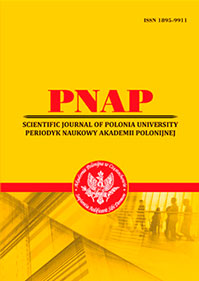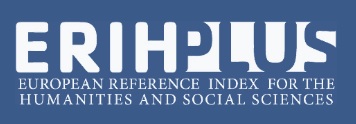МЕТАФОРИЧНИЙ ДІАПАЗОН АНГЛОМОВНОГО ЛІНГВОЕТИЧНОГО КОНЦЕПТУ DUTY
Анотація
Стаття присвячена дослідженню метафоричного діапазону англомовного лінгвоетичного концепту DUTY. Метою статті є висвітлення кросдоменних метафоричних проєкцій, в яких DUTY виступає цільовим доменом. Об’єктом дослідження є лінгвоетичний концепт DUTY, а предметом виступає його метафоричний діапазон. Подана наукова праця виконана у контексті теорії концептуальної метафори, яка дозволяє пояснити механізми кореляції концептів, що належать до різних сфер, через перенесення ознак одного на інший. Реалізація задекларованої мети здійснюється із залученням таких дослідницьких методів: методу суцільної вибірки, методу контекстуального аналізу та методу семантико-когнітивної інтерпретації. Розкривається сутність метафоричних проєкцій, яка полягає у перенесенні ознак вихідного домену (домену джерела) на цільовий домен. Зазначається, що ознаки цільового концепту, які співпадають із ознаками вихідного домену, становлять ділянку концептуального перетину, або зону концептуальної проєкції. Ця зона є неоднорідною за своєю структурою та складається із ділянки центрального перенесення та ділянок розгортання та розширення концептуальної метафори. Розгортання метафори проявляється у розширенні переліку ознак вихідного домену, які переносяться на цільовий концепт, тоді як розширення передбачає залучення інших концептів, суміжних із доменом-джерелом, який зазвичай виступає їх гіперонімом. Аналіз матеріалу дослідження, який представлений вибіркою із корпусу англійської мови iWeb, а також корпусу прислів’їв, афоризмів та цитат відомих людей із цільовою лексемою DUTY, дозволив висвітлити метафоричний діапазон концепту DUTY та розкрити метафоричні проєкції, у які він залучений у ролі цільового домену. Було встановлено, що основними гіперонімічними вихідними доменами виступають концепти THING та PERSON, прототипні ядерні ознаки яких формують центральне перенесення. Розширення цих метафоричних проєкцій представлене гіпонімами вищезазначених категорій, тоді як метафоричне розгортання репрезентоване перенесенням когнітивних ознак, які є суміжними із рисами центрального перенесення. Проведений аналіз засвідчує, що абстрактні етичні концепти метафорично осмислюються через більш конкретні базові одиниці ментального лексикону, які формують центральний життєвий досвід людини.
Посилання
2. Мирзоева Л. Ю. К проблеме культурных импликаций в переводе: концепт «долг» в русском и английском языке. GISAP: Philological sciences. Лондон, 2014. C. 36–41.
3. Чабан В. М. Вербалізація концепту dignity в англійській мові. Вісник Львівського університету. Філологічні науки. Львів, 2019. Вип. 70. С. 262–271.
4. Kövecses Z. Conceptual metaphor theory. In the Routledge handbook of metaphor / ed. by E. Semino, Z. Demjén. Routledge. London, 2017. P. 13–27.
5. Kövecses Z. Levels of metaphor. Cognitive Linguistics. Berlin, 2017. No. 28 (2). P. 321–347. URL: https://doi.org/10.1515/cog-2016-0052
6. Lakoff G. The contemporary theory of metaphor / ed. by A. Ortony. Metaphor and thought. Cambridge : Cambridge University Press, 1993. P. 202–252.
7. Lakoff G., Johnson M. Metaphors we live by. Chicago : Chicago University Press. 1980. 242 p.
8. Shevchenko I., Shastalo V. The conceptual metaphor of modesty in English and Ukrainian. Cognitive Studies. Warsaw, 2021. No. 21. P. 1–11. URL: https://doi.org/10.11649/cs.2462
9. BrainyQuotes. URL: https://www.brainyquote.com/
10. Corpus of the English language iWeb. URL: https://www.english-corpora.org/
 ISSN
ISSN 


.png)



